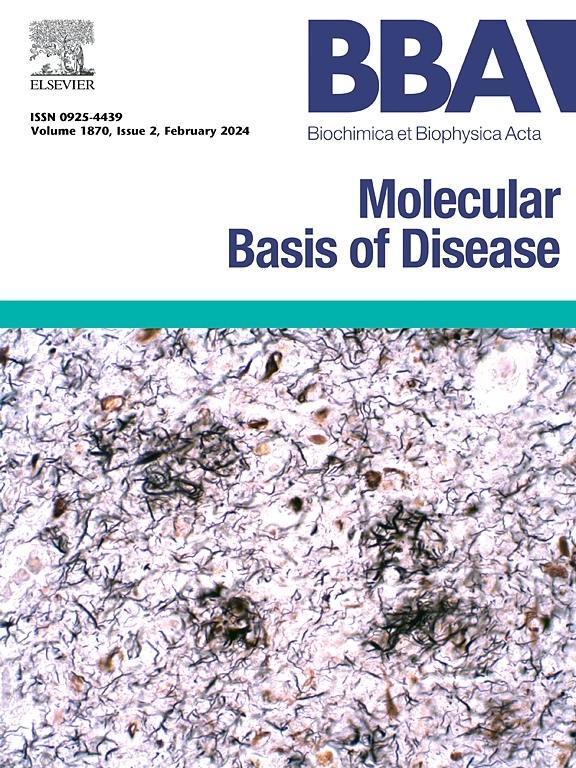脂滴与帕金森病之间的相互作用。
IF 4.2
2区 生物学
Q2 BIOCHEMISTRY & MOLECULAR BIOLOGY
Biochimica et biophysica acta. Molecular basis of disease
Pub Date : 2025-06-12
DOI:10.1016/j.bbadis.2025.167953
引用次数: 0
摘要
脂滴又称脂体,是富含脂质的动态胞内细胞器。它们在代谢调节、膜动力学和细胞信号通路中起关键作用。LD内稳态在神经传递、受体激活和神经发育中起关键作用。细胞内LD积累有助于脂肪毒性,并先于神经退行性变,如帕金森病(PD)。虽然最近的研究提高了我们对LD积累如何影响PD进展的认识,但LD生物学的几个基本方面仍不清楚。本文就PD发病过程中LD积累的关键机制作一综述。首先,我们讨论了LD的形成和生理作用,然后分析了受损的LD产生如何促进PD的发展。其次,我们分析了LD形成与降解之间的因果关系。最后,我们评估了ld作为诊断生物标志物和创新神经保护和抗炎策略的分子靶点的治疗潜力。因此,推进对LD生物学机制的理解可以为PD的发病机制提供关键见解,促进靶向治疗的设计。本文章由计算机程序翻译,如有差异,请以英文原文为准。
The interplay between lipid droplets and Parkinson's disease
Lipid droplets (LDs), also known as lipid bodies, are dynamic intracellular organelles that are rich in lipids. They serve critical functions in metabolic regulation, membrane dynamics, and cellular signaling pathways. LD homeostasis plays a key role in neurotransmission, receptor activation, and neural development. Intracellular LD accumulation contributes to lipotoxicity and precedes neurodegeneration such as Parkinson's disease (PD). While recent studies have advanced our knowledge regarding how LD accumulation influences PD progression, several fundamental aspects of LD biology remain unclear. This review explores key mechanisms of LD buildup in PD pathogenesis. First, we discuss the formation and physiological roles of LD, followed by an analysis of how impaired LD generation contributes to PD development. Second, we analyze the causal relationship between LD formation and degradation. Lastly, we evaluate the therapeutic potential of LDs as diagnostic biomarkers and molecular targets for innovative neuroprotective and anti-inflammatory strategies. Thus, advancing the mechanistic understanding of LD biology can provide key insights into PD pathogenesis, facilitating the design of targeted therapies.
求助全文
通过发布文献求助,成功后即可免费获取论文全文。
去求助
来源期刊
CiteScore
12.30
自引率
0.00%
发文量
218
审稿时长
32 days
期刊介绍:
BBA Molecular Basis of Disease addresses the biochemistry and molecular genetics of disease processes and models of human disease. This journal covers aspects of aging, cancer, metabolic-, neurological-, and immunological-based disease. Manuscripts focused on using animal models to elucidate biochemical and mechanistic insight in each of these conditions, are particularly encouraged. Manuscripts should emphasize the underlying mechanisms of disease pathways and provide novel contributions to the understanding and/or treatment of these disorders. Highly descriptive and method development submissions may be declined without full review. The submission of uninvited reviews to BBA - Molecular Basis of Disease is strongly discouraged, and any such uninvited review should be accompanied by a coverletter outlining the compelling reasons why the review should be considered.

 求助内容:
求助内容: 应助结果提醒方式:
应助结果提醒方式:


